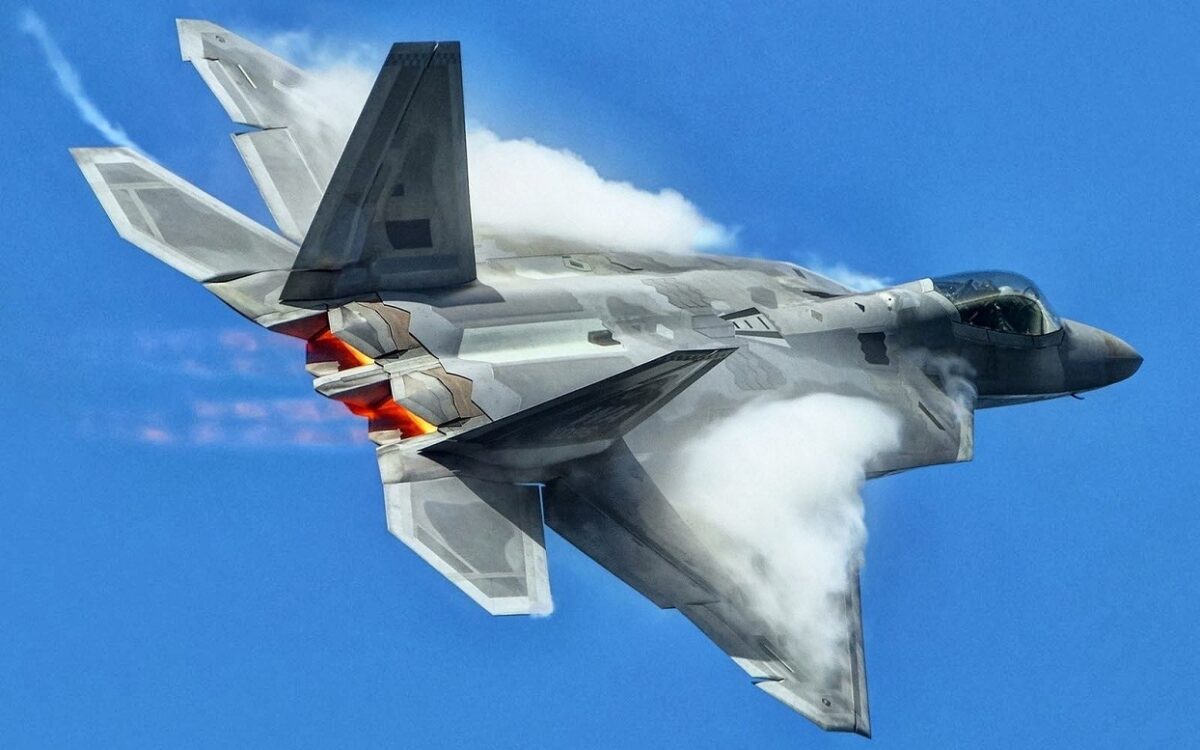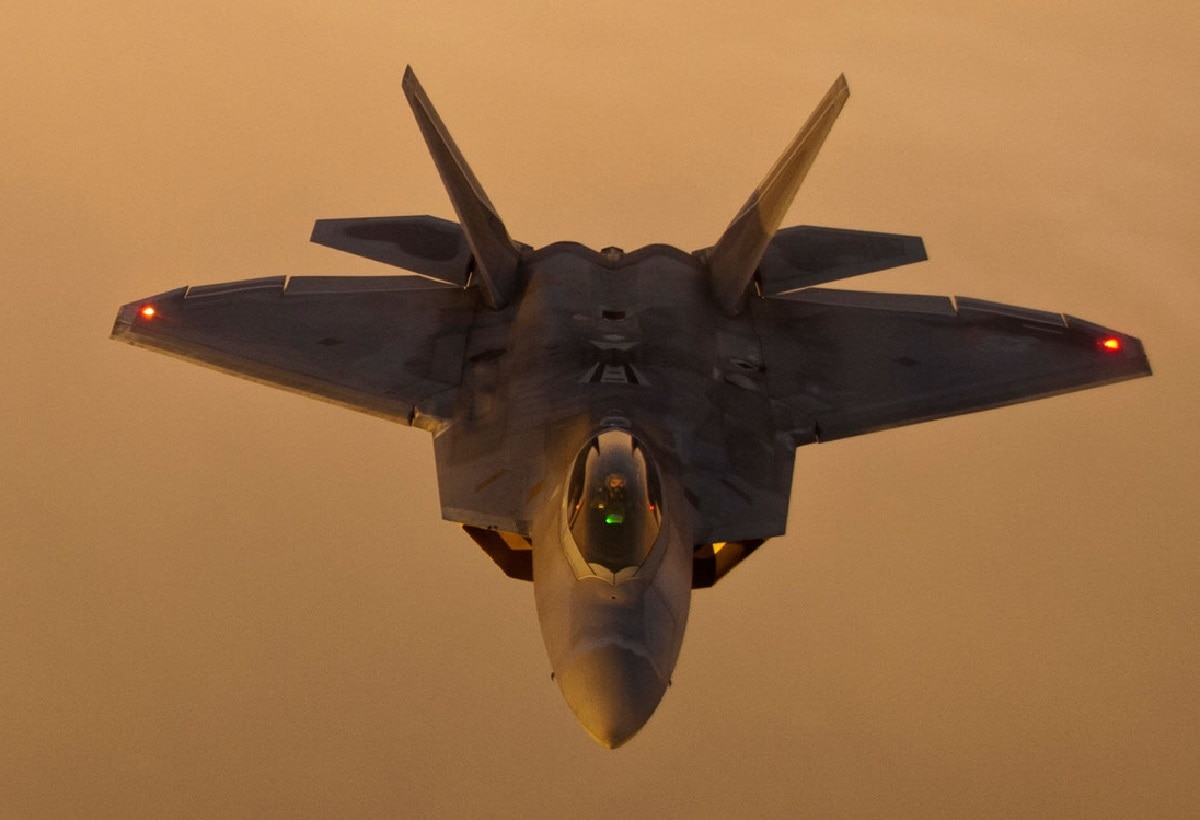The Lockheed Martin F-22 Raptor may well be the world’s most advanced fighter. A feat of engineering, the F-22 was the first-ever operational fifth-generation fighter. When the F-22 was designed in the 80s and 90s, the jet featured a stable of novel features – supercruise and supermaneuverability, stealth tech, and sensor fusion.
Thirty years later, the F-22 and its features are still on the cutting edge of aerospace technology.
Under the Hood, or Wing
Powering the F-22 are two Pratt & Whitney F119 PW-100 turbofan engines, equipped with thrust-vectoring nozzles. The nozzles, which can rotate twenty degrees up or down mid-flight, enable supermaneuverability. The Pratt & Whitney engines provide traditional, straight-ahead power, too: 35,000 pounds of thrust, which allow the F-22 to reach Mach 2.25 speed and 65,000 feet of altitude.
Fuel Conscious Supersonic Flight
Hitting supersonic speeds isn’t necessarily special anymore. Fighter jets have been doing that regularly since the 1950s. But what makes the F-22 special, is that it can achieve supersonic speeds without using its afterburners. The way afterburners work is they “take a jet engine’s unspent oxygen, combine it with jet fuel, and squirts the mixture into the engine’s exhaust stream, which ignites the mixture,” I explained in a 19FortyFive article. “The result is essentially a blowtorch, which is then angled out the back of the engine, giving the plane an extra boost.”
Now, afterburners are great for generating speed – but they also burn through tons of fuel. Supercruise, on the other hand, allows a jet to achieve supersonic speeds while maintaining enough fuel reserve to, say, engage in a dog fight, once it arrives at its intended destination.
In an effort to reduce the F-22’s radar cross-section (RCS), the jet was built with an internal weapons bay. Instead of carrying weapons on external hardpoints, like the vast majority of military jets ever built, the F-22 carries its weapons internally.
In addition to reducing the F-22’s RCS, the internal weapons bay also reduces parasitic drag, making the jet more aerodynamic and maneuverable.
Advanced Systems
The Raptor also features a full complement of advanced software systems. “Using sensor fusion, data from multiple onboard sensor systems are synthesized to create a more comprehensive tactical picture,” I wrote. “The benefit, of course, is increased situational awareness and a streamlined workload for the pilot.” The synthesized information available to the F-22 pilot was world-class when it first debuted – but the F-35 Lightning II has since displaced the F-22 as the world’s preeminent data fusing fighter. Regardless, the F-22 is quite capable – so capable that the jet has earned the nickname “mini-AWACS.”
While the F-22 is an incredible machine, the jet’s development was epically overbudget and epically delayed. Was the juice worth the squeeze? Perhaps not. The F-22 has only seen limited action over two decades of service. And last May, the U.S. Air Force announced plans to begin phasing out older F-22 Raptors; 33 F-22s are already on the chopping block.
Since the F-22 is no longer in production, the proposed phase-out would most likely represent a permanent fleet reduction – and would likely be the first increment in a forthcoming retirement of the entire F-22 fleet.

Image: Creative Commons.
However, the House Armed Services Committee rebuked the USAF plan, instead of moving for older F-22s to be upgraded. Stay tuned.
Harrison Kass is the Senior Defense Editor at 19FortyFive. An attorney, pilot, guitarist, and minor pro hockey player, he joined the US Air Force as a Pilot Trainee but was medically discharged. Harrison has degrees from Lake Forest College, the University of Oregon, and New York University. He lives in Oregon and listens to Dokken. Follow him on Twitter @harrison_kass.

